Wishing in the Well of Subconscious Drawing
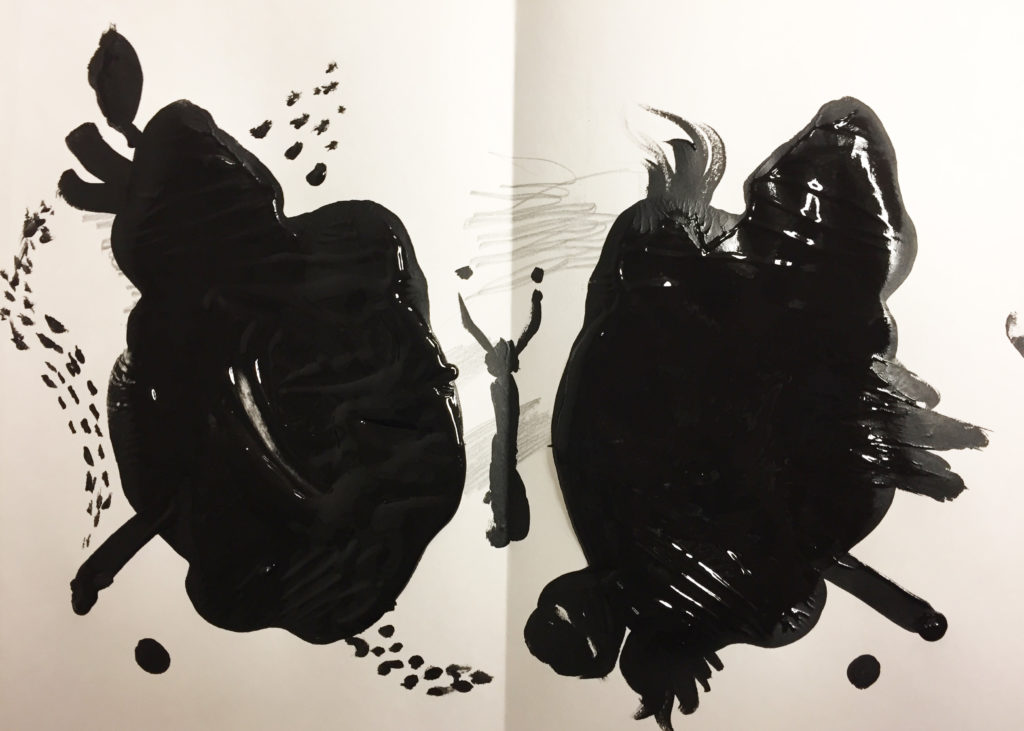
A student’s experiment with pareidolia in acrylic

A student’s image with alcohol ink
For our first collaborative workshop, Max and I came up with an activity inviting the students to explore pareidolia, automatism and the subconscious through making a creature name drawing out of the letters of their name as a warm-up, then experimenting with doodling techniques, textured rubbing drawings, Rorschach painting with acrylic or watercolor, and alcohol inks. After playing with each of these while we were demonstrating and showing the slides with artists’ work with the overall concept, they formed images about their wishes and dreams through abstractions in a choice of mediums. At the end, we had them write a positive statement about someone else’s drawing, walk around looking and place it next to that work.
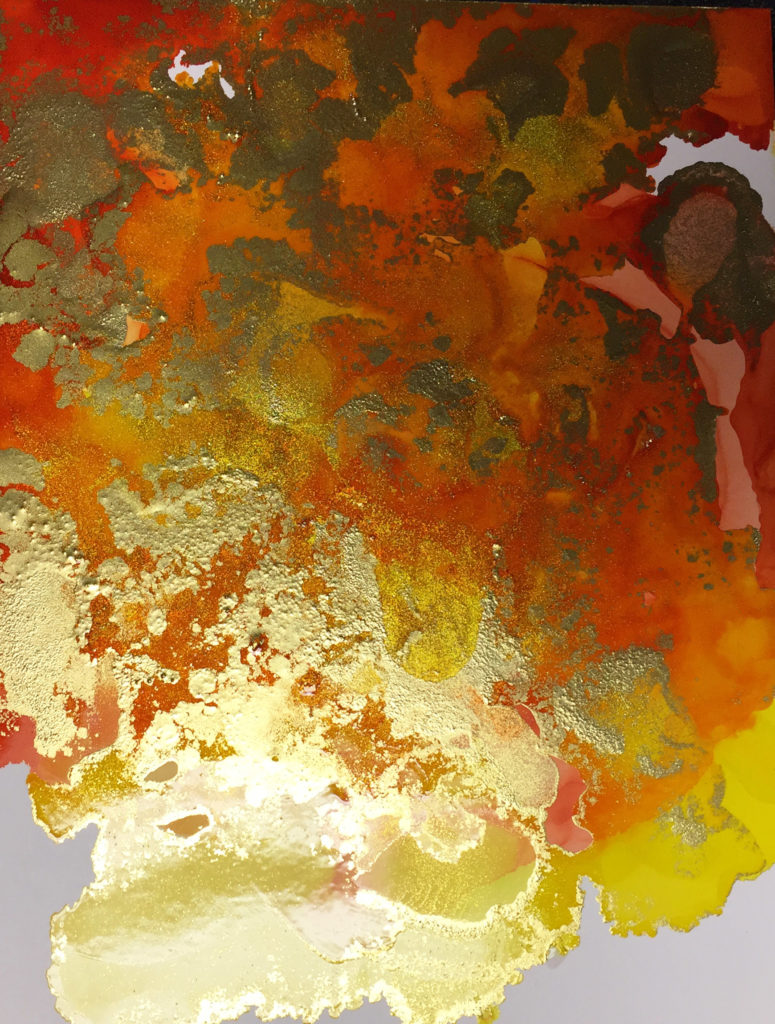
A student’s beautiful drawing with inks
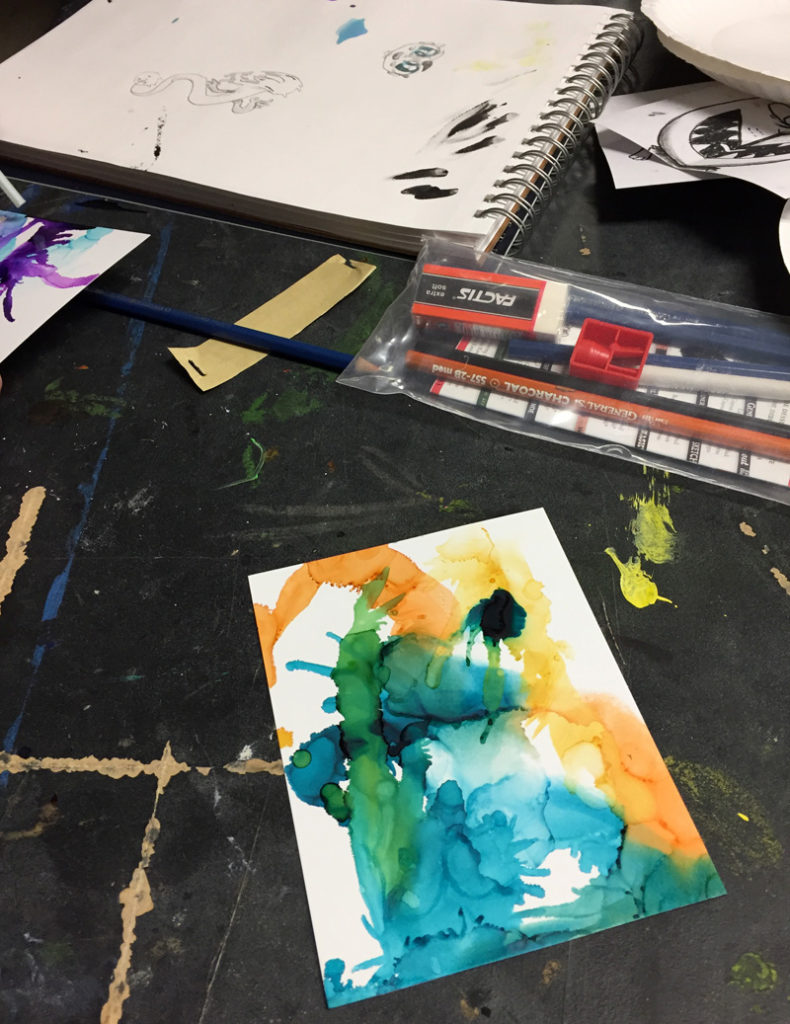
A student at work
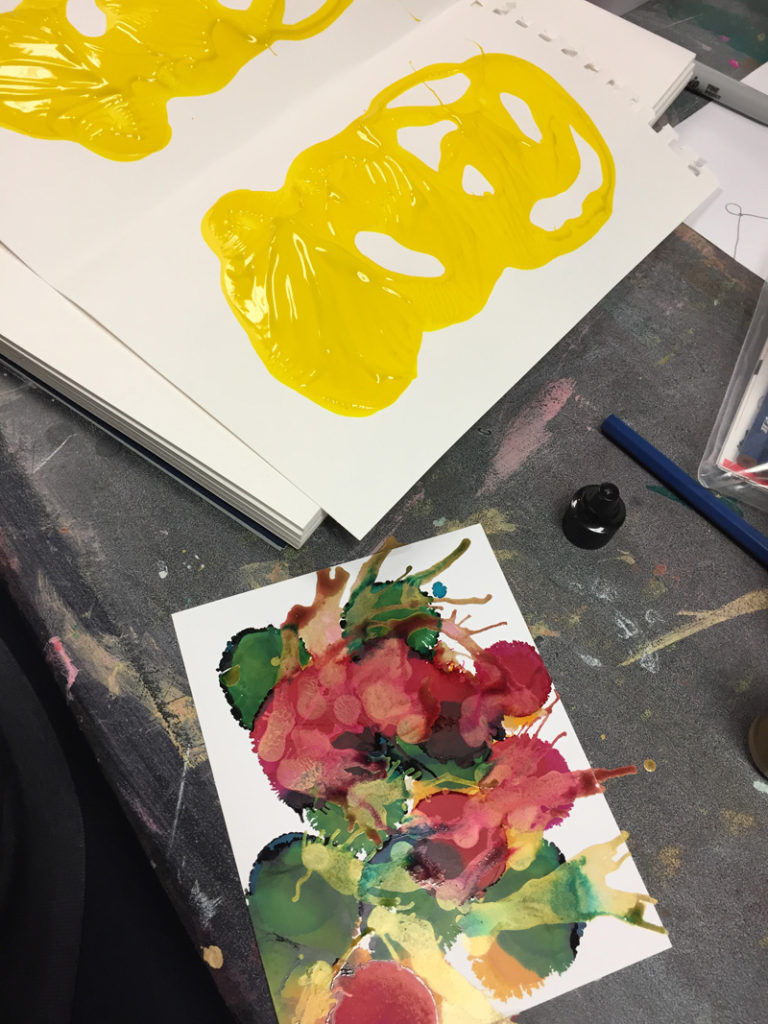
Another playing with inks and pareidolia
Tessa Sutton & Max Johnson
Secondary Art Methods
Spring 2019
Title of the Workshop: Wishing in the Well of Subconscious Drawing
Level or Course: Secondary (grades 7-12)
Time Needed: 90 minutes
Workshop Overview/Goals:
This first meeting with the students enables us to get to know their personalities, interests and play abilities in order to create the next activities through a monster name drawing and then experimenting with their wishes and dreams through the process of playing with drawing materials to show their concerns. Students can learn each other’s names as they play with drawing a monster, using lettering as an imaginative starting point. This builds a positive studio environment.
Techniques to explore include automatism (including rubbing objects for texture), instances of pareidolia and various ways to doodle. By experimenting with the concept of wishes and dreams using doodling and surrealist techniques, they can translate their ideas into abstraction. Teaching artists will show examples of their artwork and two artists who inspire them to get the students to know them and understand that the workshops are collaborative between student and teacher.
NAEA Standards:
Creating: Generate and conceptualize artistic ideas and work, Anchor standard #1.
Performing: Convey meaning through the presentation of artistic work, Anchor standard #6.
Responding: Interpret intent and meaning in artistic work, Anchor standard #8.
Connecting: Relate artistic ideas and work with societal, cultural, and historical context to deepen understanding, Anchor standard #11.
Objectives:
TLW create a monster name and wish drawings through experimenting with pareidolia, automatism and doodling techniques using abstraction. Anchor standard #1.
TLW explain, interpret and communicate their ideas to peers through their drawings in the gallery walk. Anchor standard #6.
TLW generate, analyze and interpret meanings in their own work through looking and discussing presented artists’ work. Anchor standard #8.
TLW connect their ideas and work with artwork viewed in the slides presented to place them in a context. Anchor standard #11.
Visuals:
All are in PowerPoint or available to see in class in book form.
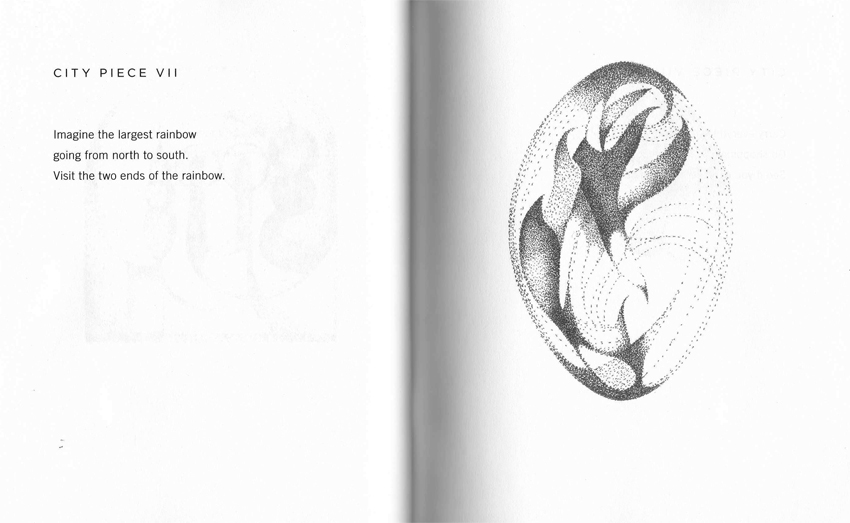
Excerpts from Yoko Ono’s, Acorn, 2013, book

Max Ernst, Forest and Dove, 1927, oil on canvas, 100 x 82 cm.
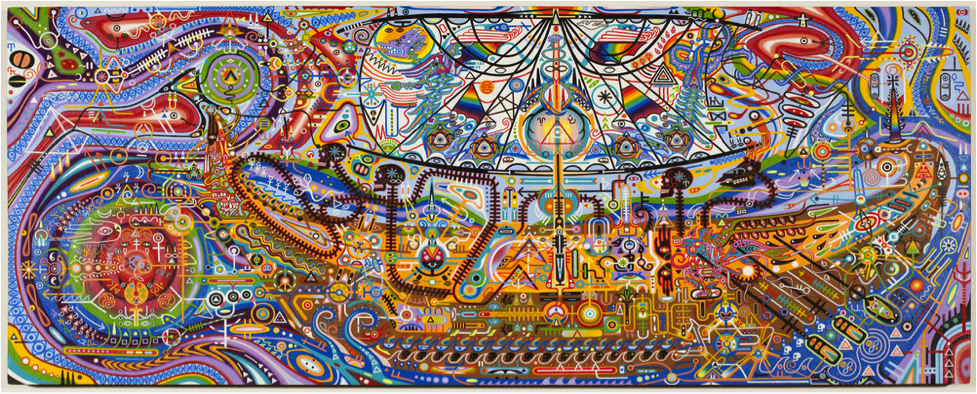
Shawn Thornton, Witch Doctors at The Eye of The Solar Epoch, 2010, oil on panel, 12 x 29 in.
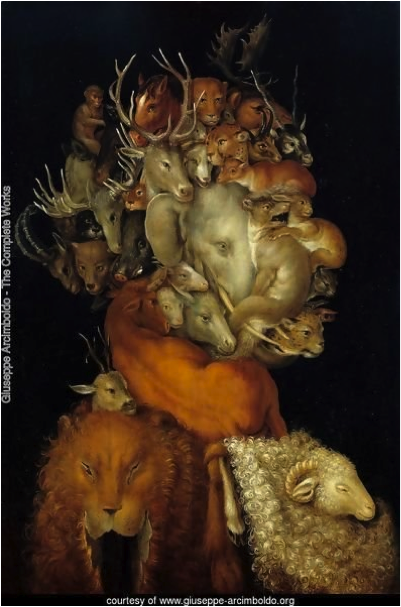
Giuseppe Archimboldo, Earth, 1566, oil on wood, 70 x 48.5 cm.
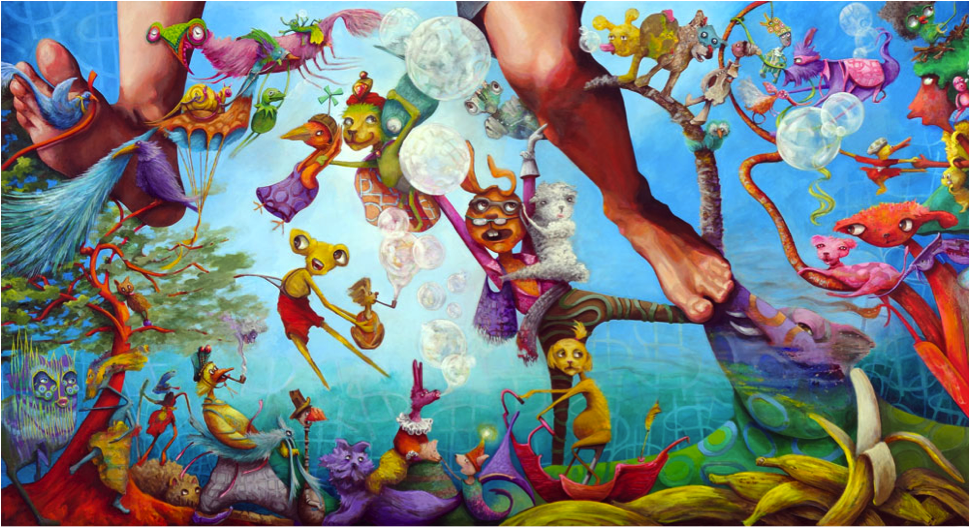
Dana Donaty, Jumpin’ Jack Flash, 2015, acrylic on canvas, 48 x 90 in.
Teacher Examples:
Tessa:
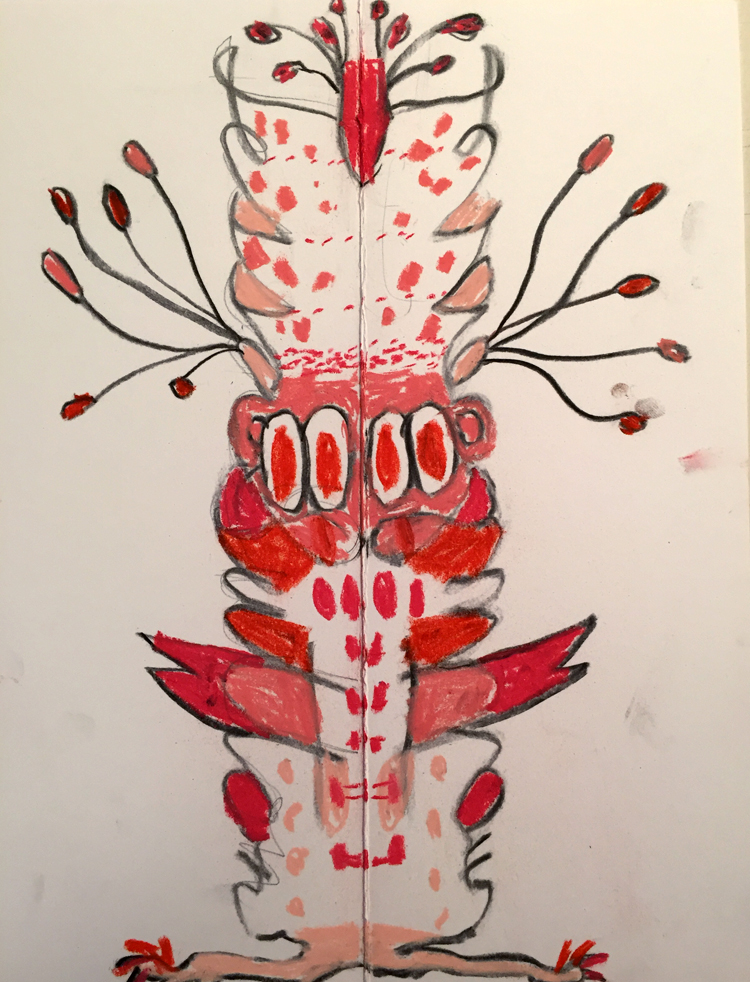
Monster Name Drawing: charcoal and pastel on paper

Wish Drawing 1: chalk pastel on paper

Wish Drawing 2: acrylic paint on paper

Acrylic paint and pencil on paper
Max:

Name Drawing: pen on paper
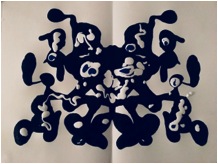
Dream Drawings 1, 2, and 3: acrylic and pen on paper

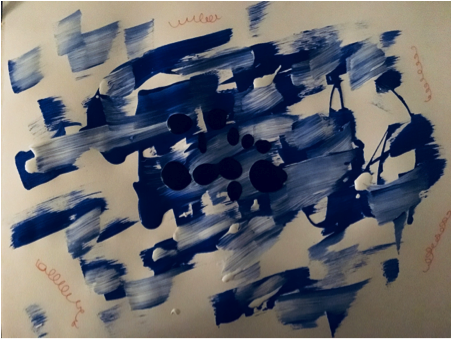
Vocabulary:
Abstract: a representation of an idea, but not really having a concrete or recognizable form to interpret.
Pareidolia: visual stimulus, causes humans to apply familiar, often human features, to things that in reality don’t have them, such as viewing an electrical socket as a face.
Automatism: the avoidance of conscious intention in producing works of art, especially by using mechanical techniques or subconscious associations.
Space: an element of art that refers to the areas around, between, and within components of a piece. Types of space: negative and positive, deep and shallow, and two-dimensional and three-dimensional space.
Line: line is an art element which is often used to form shapes and separate space.
Subconscious: a part of an individual’s mind which we generally are not aware of, but the subconscious can have influence on our actions and feelings.
Supplies, Materials and Resources Needed:
Materials: drawing paper, post-its, pencils, colored pencils, watercolor, oil and chalk pastels, erasers, water cups, paint trays, brushes, string, sharpies, alcohol inks, alcohol, eye droppers,
5 x 7 in. note cards
Technology: Computer, monitor, HDMI or other cables to attach computer to monitor
Teaching Procedure Plan:
Launch:
1. Monster Name Drawing. Students will be invited to create mirrored images of their names on folded “hot-dog” paper. Using the lines of their names, they will use pareidolia to see monsters or creatures and bring them to life using drawing mediums of their choice (10 min.)
2. Teachers will circulate and see if we can read their names and ask them about their creatures. (5 min)
3. Introduce ourselves, show images of our work and talk about our interests, showing two artists that we both like (5 min. total).
4. Pass out survey and activity ranking sheet and chat about these. Ask if they have other ideas and explain to students we are interested in their ideas and there is a space in the ranking sheet for other suggestions that they might have (5 min.).
Instruction or Demonstration with Problem:
5. Show Yoko Ono’s, Acorn, book. Students can look at the slides instructors show on wishes/dreams involving automatism, doodling and pareidolia. Explain that we would like them to explore their dreams and wishes on paper or materials of their choice using abstract images (5 min.).
6. Short demonstration of folding paper with ink to create a rorschach, rubbing to create texture, using string and watercolor, doodling to build layering, adding shapes and using alcohol inks (5 min.).
Create:
7. Students will be made aware of where the materials are located (in easy to access locations with labels of the materials) and how they can get these on their own. They will obtain any materials they need after the demonstration (5 min.).
8. TLW explore abstract images made by pareidolia with alcohol inks, pen and ink, ink, pencil, colored pencil, folding the paper, using string to make shapes. Show some handouts on doodling that may help them. Ask if they have questions. Students will be encouraged to experiment with more than one technique and layering of them (35 min.).
9. Clean up time will be announced 5 minutes before the closure period and students informed of where the sink is located and where to place supplies (5 min.).
Closure:
Closure involves the summative assessment gallery walk as described below (5 min.).
Questions to ask students to engage them in a discussion of their art:
How can you show your wish without using figurative images?
What would they wish for themselves, other people, the world?
How do you explore dreams using abstraction by experimenting?
How can you abstract a concrete idea?
Can we make sense of our dreams through exploring them visually?
Rubric/Assessments/Evaluation/Feedback:
Formative:
Questions:
What sort of wishes/dreams did the students focus on? Good or bad dreams and for who?
Did students make use of the wide range of materials at their disposal and draw from the artists’ examples?
Which students seemed stumped by the activity? What kind of questions did they ask to help clarify the activity?
How did the students explain and/or represent their dream/wish through the abstract medium?
How willing where the students to open up about wishes and dreams to peers and to us instructors?
Did the students seem interested in the concepts of dreams and wishes? What about exploring pareidolia?
Observations:
Teacher will look at the types of shapes the students latched onto, explored and see how invested the students are in the activity. Instructor will listen to questions and observations the students make before, during, and after the activity to check for understanding.
Summative:
Students will do a gallery walk at the end of the session and place post-it notes near each student’s work explaining PCP comments (positive, constructive, positive). We will then go around and discuss how they thought these pieces were successful and share insights into their processes (5 min.).
Accommodations, Enrichments & Extensions:
Students who may have difficulty with this lesson:
Accommodations can be made for students who have trouble holding or grasping materials by creating a sponge for them to put their brush or pencil inside of. Additionally, students who have difficulty grasping making an abstract interpretation may draw a representational piece. Students who are hard of hearing may sit nearer to the instructors as well as sight impaired students. Presentations will have large font for people at the back to see clearly.
Advanced Learners:
Does the context where you place your wish have any relationship to how you made your wish? Research one way in depth how people made wishes in certain locations in mythology or history.
Students who finish early:
These students can construct another drawing using a second method of their choice that they haven’t tried.
References:
Arcimboldo, G. (1566) Earth. Retrieved from
https://www.wikiart.org/en/giuseppe-arcimboldo/earth-1570.
Dodson, B. (2007). Keys to Drawing with Imagination. Cincinnati, OH: North Light Books.
Donaty, D. (2015). Jumpin’ Jack Flash. Retrieved from https://www.danadonatyfineart.com
/fullscreen-page/comp-jnniusff/5bce311b-a96f-4e54-927c-3d5f9cb440c1
/6/%3Fi%3D6%26p%3Davzys%26s%3Dstyle-jnniusg51.
O’Connell, R. (2014, November 11). How we came to make wishes on these 11 things. Mental Floss. Retrieved from http://mentalfloss.com/article/59991/how-we-came-make-wishes-t
these-11-things.
Ono, Y. (2013). Acorn. Chapel Hill, NC: Algonquin Books.
Tate Modern. (2019). Automatism. Retrieved from https://www.tate.org.uk/art/art-terms/a
/automatism.
Thornton, S. (2010). Witch Doctors at The Eye of The Solar Epoch. Retrieved from
https://shawnthorntonpainting.com/section/422233-Painting.html.